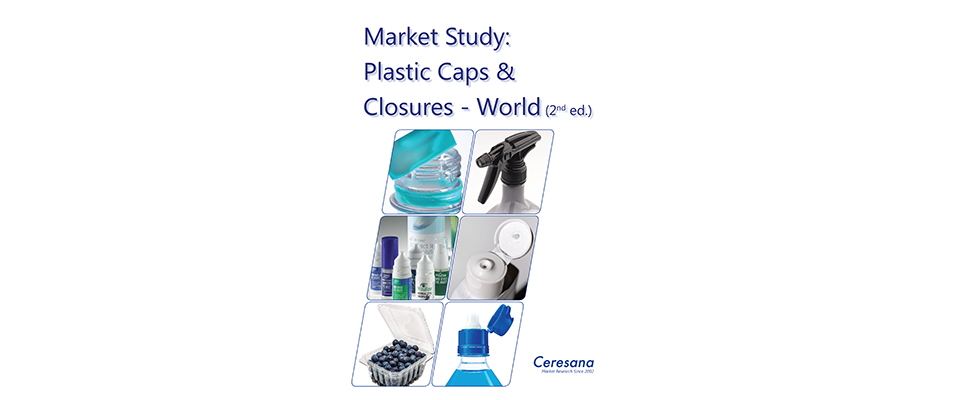Screw Caps Dependent on Development of Beverage Segment
“In 2017, screw caps accounted for more than two thirds of the global market for plastic caps and closures,” Ceresana’s CEO Oliver Kutsch says, “Their market share, however, will decrease as competition from other types of closures increases significantly.” The growing demands of consumers are increasing the demand for closures that allow easier handling and accurate dosing of package contents. However, there are major regional differences. For the 19 most important countries, the market study examines the demand separately for each of the different types of plastic closures.
Polypropylene and HDPE Dominate the Market -PET Gains Market Shares
The different requirements for closures within the individual application areas as well as the different designs of the types of closures have an effect on the choice of the respectively used plastics. The study on the worldwide closures market offers separate figures for the plastic types polypropylene (PP), polyethylene (HDPE and LDPE), polyethylene terephthalate (PET), Polystyrene (PS), as well as the aggregate of “other plastics”.
Significant Regional and Country-Specific Differences
In addition to the change in packaging types, for example the trend towards stand-up pouches, other factors are also influencing the demand for plastic closures. Consumer health concerns and government taxes on beverages containing sugar are inhibiting demand for carbonated soft drinks or juices in many countries. In contrast to that, demand for bottled water is likely to continue to account for high growth rates in the upcoming years. However, the individual factors and the resulting market dynamics can vary considerably from region to region. Thus, the market situation of the individual countries is analyzed separately in this study.
The Study in Brief:
Chapter 1 provides a description and analysis of the global market for plastic caps and closures – including forecasts up to 2025. Figures on production and demand are given for each world region. Additionally, the study also contains a distribution of global demand of plastic caps and closures into the plastic types polypropylene (PP), polyethylene (HDPE and LDPE), polyethylene terephthalate (PET), polystyrene (PS), as well as the aggregate of “other plastics”.
Chapter 2 provides figures on production, import, and export of, as well as demand for plastic caps and closures in billion units for 19 countries. Additionally, demand for plastic caps and closures for each country is split by area of application as well as types of closures.
Chapter 3 offers a detailed analysis of various application areas of plastic caps and closures: data in billion units on development of demand in the segments lemonades, water, juices, alcoholic beverages, other beverages, food, cosmetics & pharma as well as the aggregate of “other applications”, such as household chemicals or industry & transport.
Chapter 4 analyzes the market for plastic caps and closures split by the types of closures “screw caps”, “flip-top and disc-top closures”, “dispensers and sprays” as well as “lids and overcaps”. The divided demand is arranged clearly for each of the 19 countries and for all world regions (in billion units).
Chapter 5 provides company profiles of the largest manufacturers of plastic caps and closures – clearly arranged according to contact details, revenues, profit, product range, production sites, and profile summary. In-depth profiles of 72 producers are given, including ALPLA Werke Alwin Lehner GmbH & Co KG, Amcor Ltd., Berry Global Group, Inc., Reynolds Group Holdings Limited, RPC Group Plc., San Miguel Corporation, Silgan Holdings Inc, Sonoco Products Co., Ltd., Tetra Laval Group, Toyo Seikan Co., Ltd.
https://www.ceresana.com/en/market-studies/packaging/plastic-caps-world





